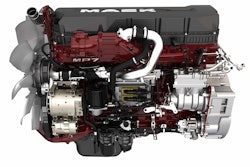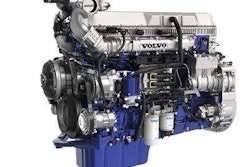According to the Environmental Protection Agency (EPA), transportation sources emitted 29 percent of all greenhouse gas (GHG) emissions in the U.S. in 2007 and have been the fastest-growing source of GHG emissions in the country since 1990. Heavy-duty vehicles are the fastest-growing contributors to GHG emissions, the EPA adds, with Class 7 and 8 combination tractors and their engines accounting for roughly two-thirds of total GHG emissions and fuel consumption from the heavy-duty sector.
To combat this, beginning with the 2007 model year, all on-road diesel heavy-duty engines were required to be outfitted with a diesel particulate filter and another 50 percent of engines required nitrogen oxide (NOx) exhaust control technology.
By the 2010 model year, all on-road heavy-duty diesel engines were required to have NOx exhaust control technology.
Truck OEMs have spent the last 10 years chasing ever-tightening emissions regulations and the moving target that compliance has become will continue to move – at least for the foreseeable future.
With EPA 2010, GHG14 and GHG17 already checked off engineering to-do lists, EPA Phase II rests on the horizon.
The EPA and NHTSA, in collaboration with the California Air Resources Board (CARB), plan to extend the Heavy-Duty National Program beyond model year 2018, to further reduce fuel consumption and reduce CO2 emissions by up to 4 percent compared to Phase 1 before 2028.
Engines are already running at near-zero NOx and they’re getting better fuel economy than ever before. Squeezing more blood from this turnip is going to challenge engineers and designers.










